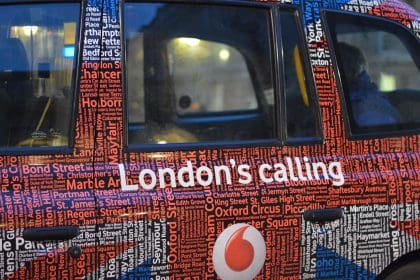The restrictions we are all facing due to Coronavirus will be with us for a while, and whenever the Government recommends easing them, everyone will need to be prepared for what will be a ‘new normal’.
Reducing the spread and keeping passengers, as well as ourselves, safe is now a vital part of every driver’s job.
With cabbies everywhere needing to know how to thoroughly clean their taxi properly, here’s Patons top tips:
Personal protective equipment or PPE
The government recommends using personal protective equipment, or PPE, when cleaning in non-healthcare settings. If someone with confirmed or suspected coronavirus has been in your taxi, you’ll need to protect yourself before you start.
As a minimum you should wear disposable gloves and an apron for cleaning. If your cab has been contaminated with bodily fluids from someone with coronavirus you should also consider wearing goggles to protect your eyes and a mask to protect your mouth and nose.
What you will need
Once you’ve got the appropriate protective clothing on it’s time to tackle the cleaning. For this you will need hot soapy water, bleach-free household disinfectant, disposable cloths or paper roll and some bin liners.
Cab cleaning checklist
- Start by cleaning your keys, all the door handles as well as the boot and bonnet release lever. You are then ready to tackle the interior.
- Disinfect your steering wheel. Don’t forget to wipe the horn and any in car tech and cup holders, taking time over control stalks for indicators, headlights and windscreen wipers.
- Scrub your gear stick and dashboard. This includes the glove box, heating controls and air vents, as grips on the vents are regularly touched by both drivers and passengers, so make sure you don’t miss them out.
- Next up seatbelts. Start with the buckles and clips before pulling the length of the seatbelt out to ensure you clean the full surface that you come in contact with whilst wearing it.
- Car doors and seats are full of germ hotspots so concentrate on handles, headrests and pockets before giving the seats themselves a through clean. Steam cleaning upholstery is also highly recommended.
- Wipe down any interior lights and grab handles on your roof and give your rear-view mirror a thorough clean on the glass and all around.
- Finally, the boot. Make sure you wash the parcel shelf and any floor tabs that conceal your spare tyres.
After you’ve cleaned
As soon as you have finished cleaning your disposable gloves and apron should be double bagged in tied bin liners. This then needs to be stored securely away from anyone for 72 hours before being thrown away in the rubbish.
If your protective clothing isn’t disposable and you want to use it again, wash the items according to the manufacturer’s instructions using the warmest water setting and dry completely.
Finally, wash your hands with soap and water for at least 20 seconds after removing your gloves, apron and other protective clothing.
Note: This information has been complied using the government page for cleaning in non-healthcare settings.
Stay safe and plan ahead with Patons.
If you have any further questions about taxi insurance from Patons, feel free to get in touch with our team, or fill out our new quote form today.




